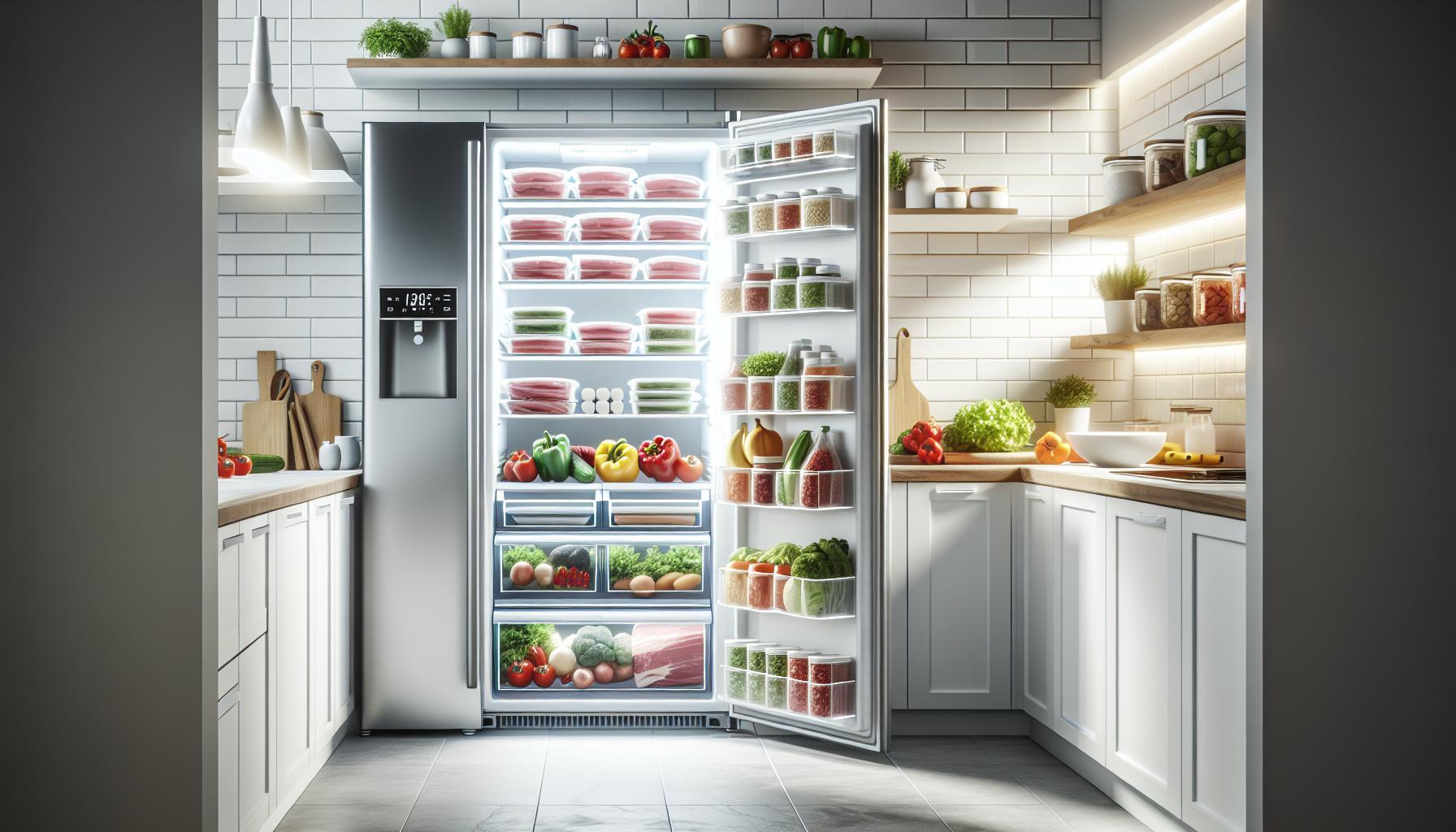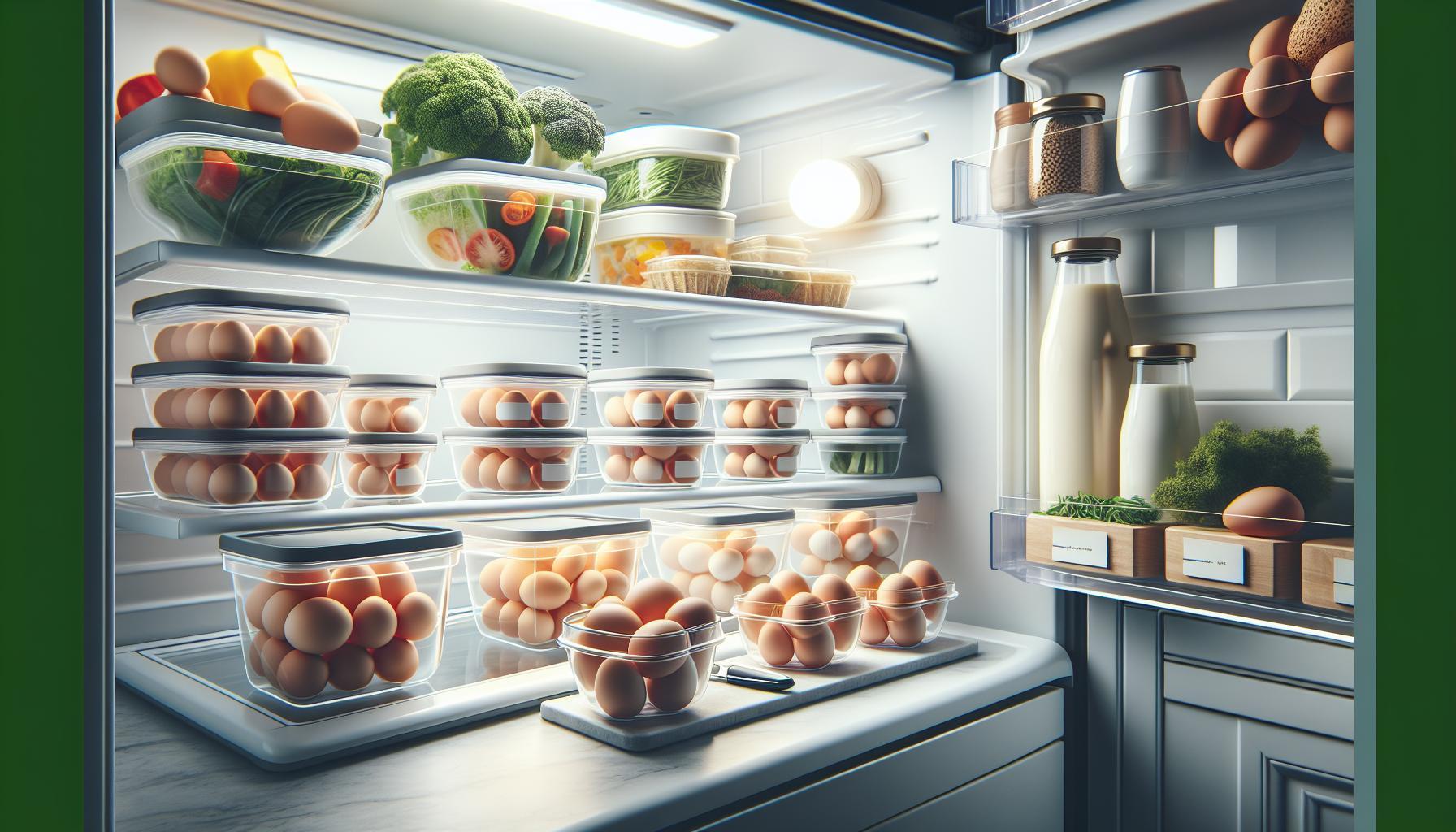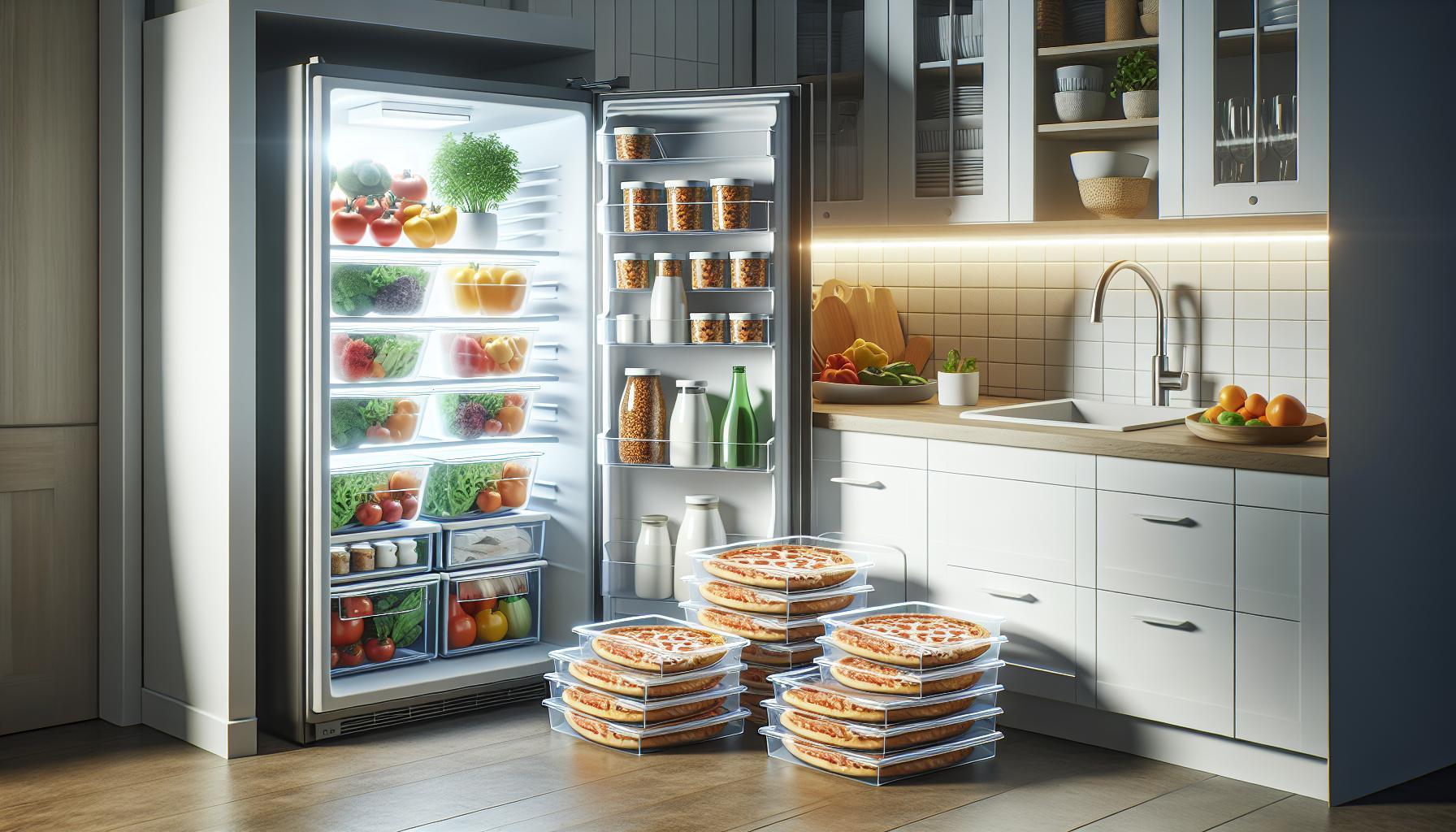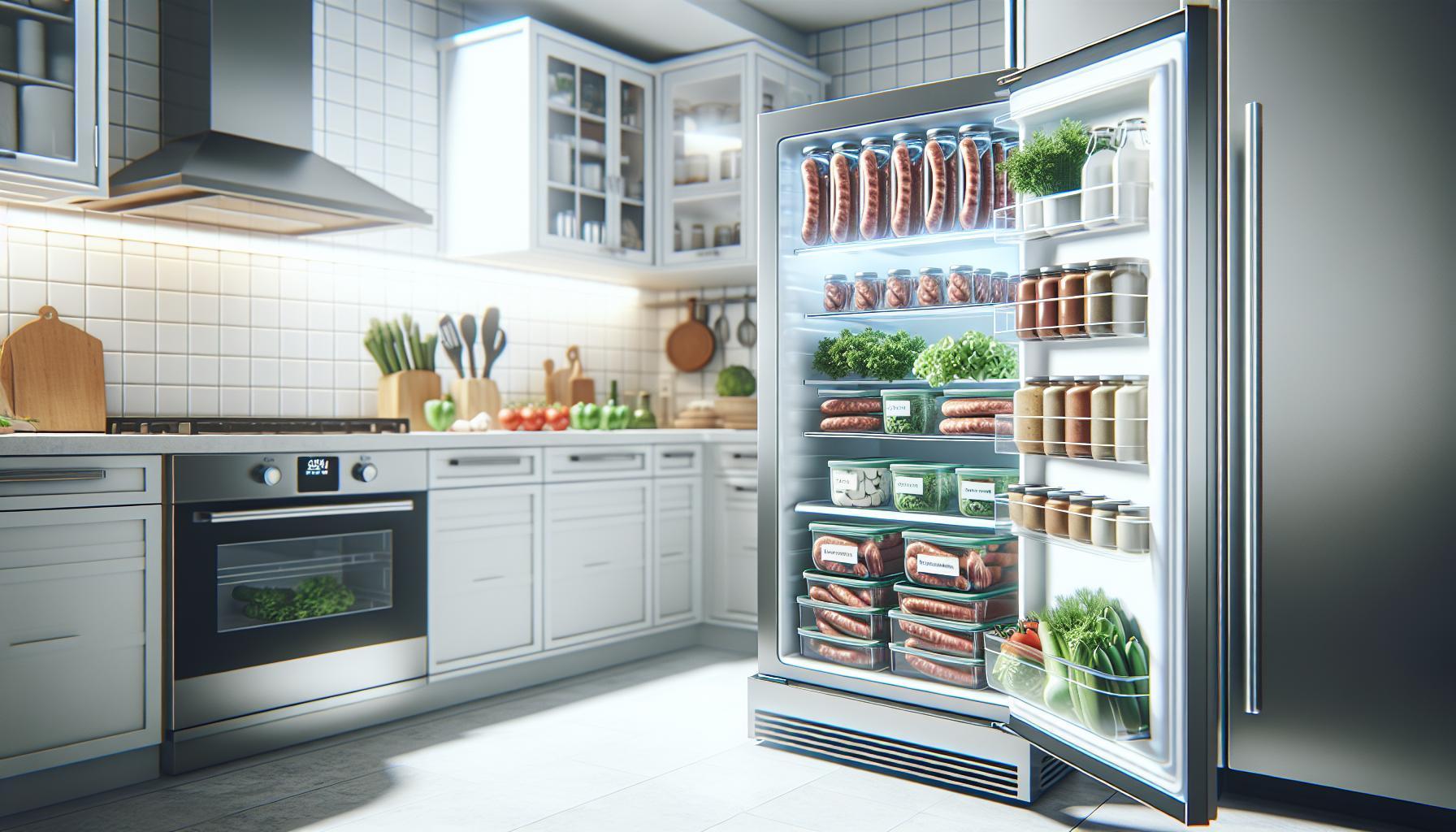Did you know that vacuum sealing can significantly extend the shelf life of your meat, keeping it fresh and safe for longer periods? Understanding how long vacuum-sealed meat can last in the fridge is crucial for anyone looking to optimize food storage, reduce waste, and ensure safe consumption.
While the airtight process minimizes exposure to bacteria and air, it’s essential to know specific timeframes to maintain quality and safety. Whether you’re meal prepping, stocking up on your favorite cuts, or simply trying to make the most of your grocery haul, having the right guidelines can save you time, money, and potential health risks.
In this article, we’ll delve into practical storage tips, science-backed timelines, and essential safety practices to help you navigate the world of vacuum-sealed meat. Arm yourself with knowledge to make informed decisions that keep your meals delicious and safe!
How Vacuum Sealing Affects Meat Freshness
Vacuum sealing is a transformative method for preserving the freshness of meat, significantly enhancing its shelf life compared to traditional storage methods. When meat is vacuum sealed, air is removed from the packaging, which slows down the oxidation process and inhibits the growth of bacteria that thrives in aerobic environments. This fundamental shift in storage conditions helps maintain the meat’s color, texture, and flavor for extended periods, making it a favorite practice among both home cooks and professional chefs.
To maximize meat freshness through vacuum sealing, it’s essential to use proper techniques and storage conditions. Ideally, vacuum-sealed meat should be kept in a refrigerator at a consistent temperature of 32°F to 40°F (0°C to 4°C). These temperatures not only preserve the quality but also inhibit bacterial growth. Additionally, avoiding repeated exposure to air-by properly sealing and not refreezing thawed meat-can further enhance the effectiveness of this preservation method.
While vacuum sealing can prolong the freshness of meat significantly, it’s crucial to adhere to recommended refrigeration timeframes. For example, vacuum-sealed raw beef can last for 1 to 3 weeks in the fridge, compared to only 1 to 2 days if stored conventionally. The distinction becomes even more pronounced with cooked meats, which can remain fresh for 2 to 4 weeks when properly vacuum sealed.
It’s important to recognize that vacuum sealing is not a substitute for safe handling practices. Just because meat is vacuum sealed does not mean it is free from spoilage risks. Regular checks for signs of spoilage-such as off smells or discoloration-are essential to ensure that the meat remains safe to eat. By adopting vacuum sealing as part of your food storage strategy, you can enjoy the benefits of longer-lasting freshness while still prioritizing safety.
Ideal Storage Conditions for Vacuum Sealed Meat
Keeping vacuum-sealed meat fresh requires more than just the right technique; it demands optimal environmental conditions to maximize its longevity. For vacuum-sealed meat to maintain its quality, it should be stored in a refrigerator set to a consistent temperature of 32°F to 40°F (0°C to 4°C). Within this temperature range, the growth of harmful bacteria is significantly reduced, allowing the meat to stay fresh for longer periods. Fluctuations in temperature can lead to condensation inside the packaging, which may compromise the vacuum seal and create an environment where spoilage can occur.
To further enhance storage conditions, locate vacuum-sealed meat in the coldest part of your refrigerator, typically near the back or on lower shelves, away from the door where temperatures fluctuate more. Additionally, avoid overcrowding the refrigerator, as good air circulation is essential for maintaining an even temperature. If you’re stacking vacuum-sealed bags, ensure that they are placed flat and not squeezed together to minimize the risk of compromising the seal.
Another aspect of ideal storage is moisture control. Vacuum sealing removes air, but if the meat is still moist when sealed, the moisture can lead to bacterial growth. Therefore, it’s advisable to pat the meat dry with paper towels before sealing. For further safety, you can also use absorbent pads at the bottom of the packaging to catch any excess moisture that might escape during storage.
Finally, labeling each package with the date of sealing can help you keep track of storage times. While vacuum-sealed meat can last significantly longer than conventionally stored meat, it’s critical to adhere to recommended refrigeration timelines to ensure safety and quality. For example, vacuum-sealed raw beef can last between 1 to 3 weeks in the fridge, while cooked meats can retain their quality for about 2 to 4 weeks when stored properly. By following these storage guidelines, you not only preserve the quality of your vacuum-sealed meat but also uphold food safety standards throughout its shelf life.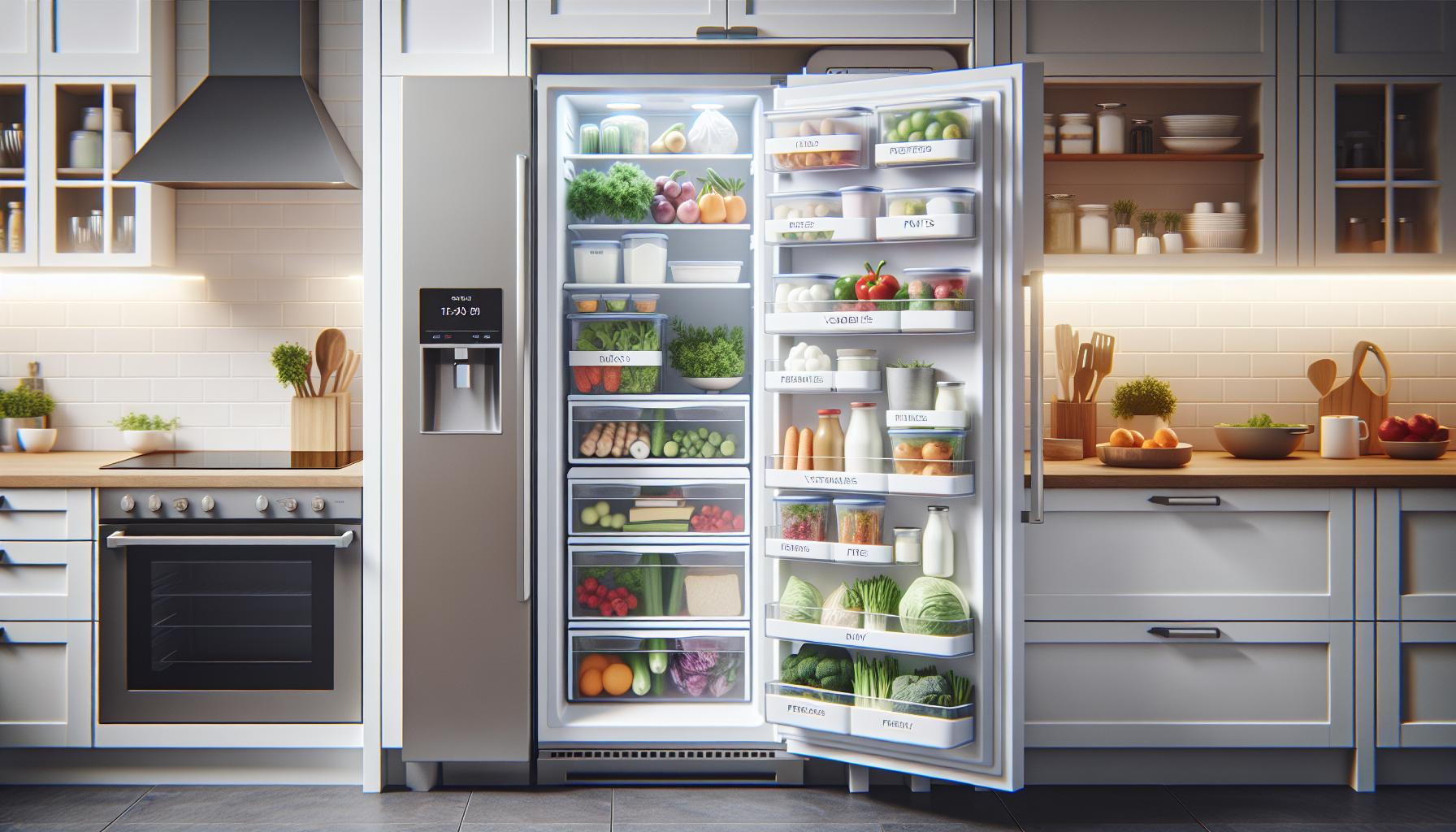
Recommended Timeframes for Refrigeration
When it comes to storing vacuum-sealed meat, understanding the recommended refrigeration timeframes is crucial for maintaining both safety and quality. Unlike conventionally stored meat, which may spoil more quickly due to exposure to air, vacuum-sealed meat benefits from a longer shelf life, provided it is stored correctly. The vacuum-sealing process removes air and helps inhibit bacterial growth, but each type of meat has its own specific optimal storage duration.
For raw meats, vacuum sealing can extend freshness significantly. Generally, unsealed raw beef can last about 1 to 3 days in the fridge, but when vacuum-sealed, it can maintain quality for up to 1 to 3 weeks. Pork and poultry are similar; vacuum-sealed raw pork can last 1 to 2 weeks, while vacuum-sealed chicken is best consumed within 1 week. Cooked meats, which are less susceptible to spoilage, can last even longer-typically 2 to 4 weeks when vacuum-sealed and stored properly in the fridge.
To help you keep track of storage durations effectively, here’s a concise overview:
| Type of Meat | Vacuum-Sealed Shelf Life in Fridge |
|---|---|
| Raw Beef | 1 to 3 weeks |
| Raw Pork | 1 to 2 weeks |
| Raw Poultry | 1 week |
| Cooked Meats | 2 to 4 weeks |
Keep in mind that while these timeframes provide a guideline, they can vary based on factors such as the cut of meat, initial freshness, and the specific conditions within your refrigerator. Always use your senses as a guide: if the meat has an off smell, slimy texture, or discoloration, it’s best to err on the side of caution and discard it. Adhering to these timeframes ensures you make the most of your vacuum-sealed meats while prioritizing safety and quality.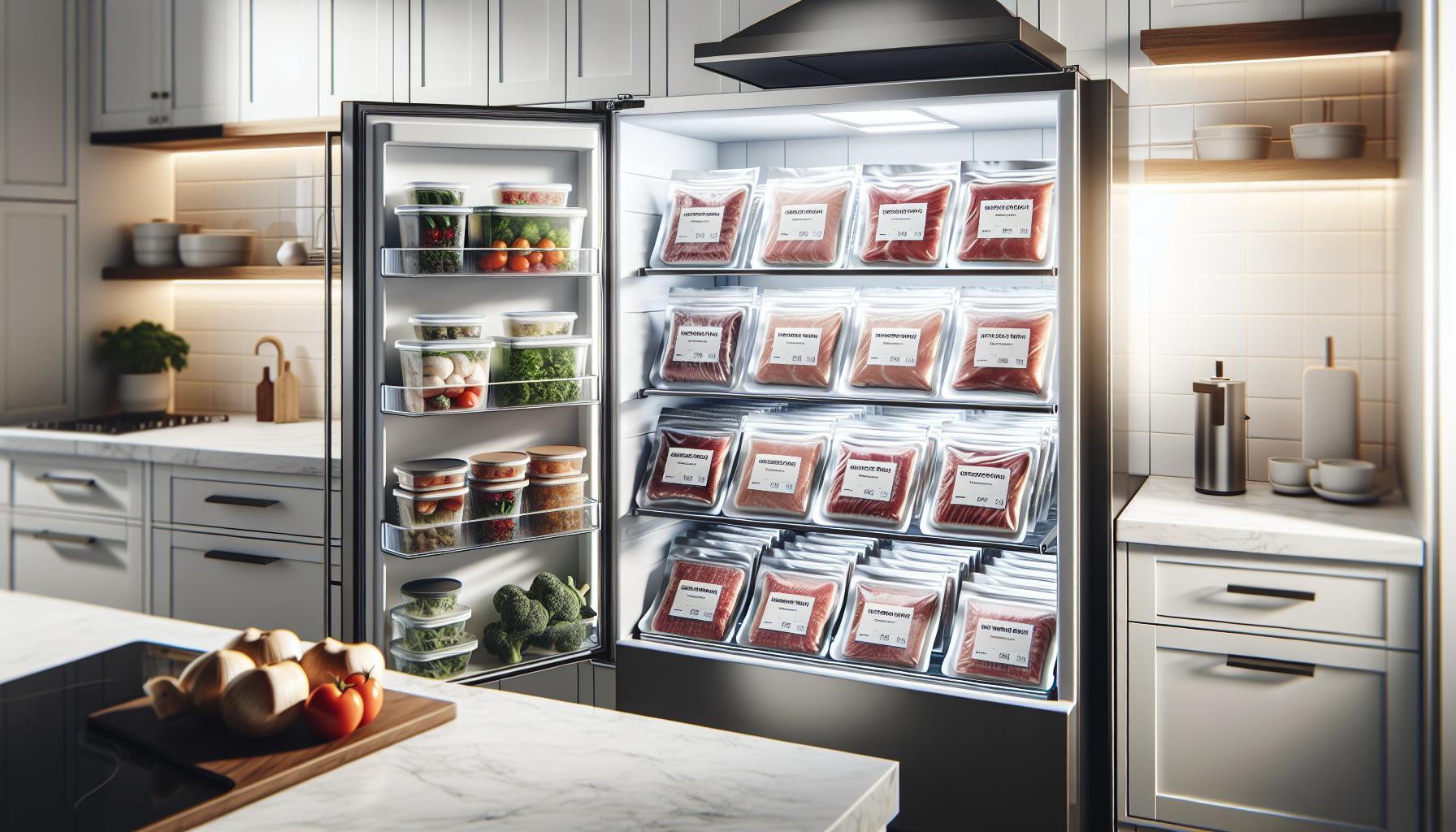
Signs of Spoilage in Vacuum Sealed Meat
Determining the freshness of vacuum-sealed meat involves vigilant observation and a keen understanding of key spoilage indicators. While vacuum sealing extends the shelf life of meat by reducing exposure to air, it does not entirely prevent spoilage. Recognizing the signs of spoilage can help ensure food safety and prevent potential health risks.
Odor is one of the most telling signs that meat has spoiled. Fresh vacuum-sealed meat typically has a mild aroma. If any strong, sour, or otherwise unpleasant smells emanate from the packaging when opened, discard the meat immediately. Additionally, examine the texture; fresh meat should feel firm and moist, while spoiled meat may exhibit a slimy or sticky surface.
Another critical aspect to observe is discoloration. Fresh meat should maintain a vibrant color, which varies depending on the type, such as bright red for beef or pink for poultry. If the meat shows abnormal colors-such as dull brown or green patches-it’s a strong indicator of spoilage. Pay special attention to the edges of the packaging. If the vacuum seal appears broken or if liquid has escaped, the contents may no longer be safe to consume.
It’s also essential to consider the storage timeframes outlined previously. While vacuum sealing can prolong the life of meat, each type has its specific optimal duration in the fridge. For instance, raw beef can typically remain fresh for 1 to 3 weeks when sealed properly, but exceeding these timeframes-even without visible signs of spoilage-can put you at risk. Using the senses in combination with established timelines ensures that you are making safe choices regarding food consumption.
By keeping an eye on these signs-odors, texture, color, and adhering to recommended storage durations-your efforts in vacuum sealing will help maintain meat freshness and safety. Implement these practices diligently to enjoy your vacuum-sealed meats while ensuring food quality and safety.
Best Practices for Thawing Vacuum Sealed Meat
Thawing vacuum-sealed meat properly is crucial to maintaining its quality and ensuring food safety. Improper thawing can encourage bacterial growth, leading to spoilage and increased health risks. The key is to thaw meat in a way that maintains its freshness while keeping it out of the “danger zone,” the temperature range between 40°F (4°C) and 140°F (60°C) where bacteria thrive.
For optimal safety, the best method to thaw vacuum-sealed meat is to place it in the refrigerator. This method allows the meat to thaw gradually and remain at a safe temperature. Depending on the size and type of meat, this can take anywhere from several hours to overnight. For example, a small cut of chicken may thaw within a few hours, while a large steak could take up to 24 hours. Always plan ahead to ensure your meat is adequately thawed before cooking.
Alternative Thawing Methods
If you’re short on time, there are other methods to consider, albeit with caution:
- Cold Water Thawing: Submerge the vacuum-sealed package in cold water, changing the water every 30 minutes. This effective method can thaw smaller cuts of meat within an hour.
- Microwave Thawing: Use the defrost setting on your microwave, but be cautious as this can lead to parts of the meat cooking. It’s best used for small pieces like chicken breasts or ground meat, especially if you plan to cook them immediately afterward.
While these alternative methods can save time, ensure that the meat is cooked immediately after thawing, especially if using a microwave, to minimize any risk of bacterial growth.
In all cases, avoid thawing meat at room temperature, as this allows the surface to reach temperatures conducive to bacteria while the inside remains frozen. Following these best practices for thawing vacuum-sealed meat will not only help preserve its quality but also ensure that your meals are safe and delicious.
Safety Tips for Storing Vacuum Sealed Meat
Storing vacuum-sealed meat correctly is crucial for maintaining its quality and preventing foodborne illnesses. Vacuum sealing significantly extends the shelf life of meat compared to traditional packaging, but improper storage can negate these benefits. One vital aspect to remember is temperature control. Always store vacuum-sealed meat in the refrigerator at or below 40°F (4°C). This temperature slows down the growth of harmful bacteria, which flourish in warmer environments.
It is also essential to keep vacuum-sealed meat in its original packaging until you are ready to use it. This prevents contamination and maintains the vacuum seal’s integrity. For longer storage times, consider freezing vacuum-sealed meat, which can extend its life for months or even years, depending on the type of meat. Make sure to label the packages with the date of sealing to monitor how long the meat has been stored.
When it comes to recommended storage durations, raw vacuum-sealed meat can typically last for about 1 to 2 weeks in the refrigerator, while cooked vacuum-sealed meat can remain safe for 2 to 3 weeks. However, always check for signs of spoilage, such as off-odors, a slimy texture, or discoloration, which indicate that the meat may no longer be safe to consume.
To further safeguard your stored vacuum-sealed meat, ensure that your refrigerator maintains a consistent and cold temperature. Regularly checking and cleaning the fridge can help avoid fluctuations that could affect food safety. Additionally, avoid overpacking the refrigerator, as proper air circulation is necessary to ensure even cooling. Following these guidelines will help you enjoy your vacuum-sealed meat safely and deliciously while minimizing food waste.
Comparing Vacuum Sealing vs. Other Preservation Methods
Vacuum sealing has emerged as a superior method for preserving meat, significantly extending its shelf life compared to other traditional preservation techniques. While methods like freezing, canning, and simply wrapping in plastic have their merits, they often fall short of matching the effectiveness of vacuum sealing in maintaining both freshness and flavor.
One of the main advantages of vacuum sealing is that it eliminates air from the storage environment, which is a primary factor in the degradation of food quality. Unlike traditional plastic wrap or bags, which still allow some air to permeate, vacuum-sealed packaging locks out air and moisture, thereby reducing the risk of freezer burn and the associated texture and flavor loss. For instance, vacuum-sealed meat can last in the refrigerator for 1-2 weeks, whereas meat wrapped in standard plastic might only remain fresh for up to a week or lose quality even sooner.
Benefits Over Other Methods
The effectiveness of vacuum sealing is also evident when compared to freezing meat without vacuum sealing. While freezing can prolong the lifespan of meat for months, vacuum sealing allows it to maintain its quality even longer-sometimes up to two to three years when stored at a consistent freezing temperature. Furthermore, vacuum-sealed meat, once thawed, tends to retain its juices better, offering a more pleasant culinary experience than meat that has been frozen using conventional methods.
However, it is essential to handle vacuum-sealed meat properly to avoid potential pitfalls. For example, while vacuum sealing significantly reduces the chance of spoilage, improper sealing may lead to the growth of bacteria if not stored at the right temperature. Other preservation methods, such as canning, can eliminate harmful bacteria through heat, but they may alter the texture and require specialized equipment and techniques, making vacuum sealing a more user-friendly option for many home cooks.
In summary, comparing vacuum sealing to other preservation methods reveals its heightened ability to extend meat’s freshness and quality. The combination of air removal preventing oxidation and moisture loss, alongside ease of use, positions vacuum sealing as an optimal choice for both safety and taste. To ensure the best results, it’s crucial to couple vacuum sealing with proper storage practices, including maintaining ideal refrigeration or freezing temperatures.
Understanding Bacteria Growth and Meat Safety
Understanding bacteria growth in vacuum-sealed meat is essential for maintaining food safety and ensuring that your meals are both enjoyable and healthy. Vacuum sealing effectively reduces the presence of oxygen, which can slow down the growth of bacteria. In an anaerobic environment created by vacuum sealing, certain bacteria that thrive in low-oxygen conditions, such as Clostridium botulinum, can indeed multiply if the meat is not stored properly or has been improperly sealed. Thus, it is crucial to adhere to proper vacuum sealing and storage techniques.
Firstly, the meat should always be kept at safe temperatures. For refrigerator storage, the ideal temperature is below 40°F (4°C). When vacuum-sealed, most meats will stay safe and retain freshness for 1-2 weeks in the fridge, significantly longer than unsealed meat. However, monitoring the refrigerator’s temperature is key; if it fluctuates, it can lead to potential spoilage. Always check that your vacuum sealing is intact and that there are no air pockets, as these could allow for bacteria to grow.
Secondly, it’s essential to be aware of the signs of spoilage when storing vacuum-sealed meat. Discoloration, off-odors, or an unusual texture can indicate the presence of harmful bacteria. Properly sealed meat should have a consistent color and a fresh, pleasant smell. Even when using vacuum sealing, practicing the “first in, first out” rule-using older packages before newer ones-can help minimize the chances of spoilage.
For longer storage, consider freezing the vacuum-sealed meat. While refrigerated vacuum-sealed meat is great for short-term use, freezing can extend its shelf life dramatically, often up to 2-3 years without significant loss of quality. Just remember to maintain a steady freezing temperature of 0°F (-18°C) or lower. Upon thawing, consume the meat promptly, and avoid refreezing unless it has been cooked thoroughly, as this can encourage bacteria growth.
By understanding these important factors regarding bacteria growth and meat safety, you can enjoy the benefits of vacuum sealing while minimizing any health risks associated with improper storage. For your health and safety, always handle meat with care, adhere to recommended refrigeration times, and stay vigilant for any signs of spoilage.
How to Properly Vacuum Seal Meat at Home
Vacuum sealing meat at home can dramatically enhance its freshness and extend its shelf life, but the key to success lies in the technique. Proper vacuum sealing prevents air exposure, minimizing spoilage and maintaining quality. To begin, ensure that both your hands and tools are clean to reduce the risk of contamination. Use high-quality vacuum-seal bags specifically designed for this purpose; these bags are thicker and can withstand the freezing process without tearing or puncturing, which is critical for maintaining an airtight seal.
To vacuum seal your meat, first, prepare the protein by patting it dry with paper towels. Moisture on the meat can interfere with the sealing process, so this step is crucial. Place the meat in a vacuum bag, allowing at least two inches of extra space above the protein to accommodate the sealing process. It’s advisable to lay the bag flat in the vacuum sealing machine, ensuring there are no creases or folds that could cause air leaks. Activate the vacuum seal function on your device-this usually involves pressing a button or setting a dial. During the vacuuming phase, the machine will suck out the air and then seal the bag tightly.
After sealing, it’s important to inspect the bag for any air pockets. If you detect any, re-seal the bag. Store the vacuum-sealed meat in the fridge at or below 40°F (4°C) for optimal freshness. Most meats can remain safe and high-quality for 1-2 weeks in this state. If you plan to store the meat for longer, consider freezing it, which can preserve its quality for 2-3 years when stored at 0°F (-18°C) or lower. Just remember to label your bags with the date and type of meat for easy tracking.
For those looking to maximize their vacuum sealing efforts, you can also pre-portion meat for meal prep. Divide larger cuts into meal-sized portions before sealing; this way, you’re not defrosting more than you need at once. These practices not only extend the shelf life of your meat but also help streamline meal preparation in the future, ensuring you always have fresh ingredients on hand without excess waste.
Common Mistakes in Vaccum Sealing Food
Vacuum sealing can be a game-changer for food preservation, especially when it comes to meat, but many people unknowingly make several common mistakes that undermine the effectiveness of this method. One of the most significant errors is not properly preparing the meat before sealing. Moisture is the enemy of a good seal; if the meat has excess moisture, it can interfere with the vacuuming process and result in air pockets that lead to spoilage. Always pat your meat dry with paper towels to ensure it is as free of moisture as possible before placing it in a vacuum bag.
Another frequent mistake is overfilling the vacuum bags. When sealing meat, it’s crucial to leave at least two inches of space above the protein. Not only does this extra space facilitate a proper seal, but it also allows for shrinkage that may occur during the freezing process. If the bag is overstuffed, the vacuum sealer may struggle to obtain an airtight seal, which significantly reduces the longevity of the meat stored inside.
Ignoring the Quality of Vacuum Bags
Using low-quality or damaged bags can also lead to issues. Regular plastic bags are not equipped to withstand the conditions that vacuum sealing creates. Always opt for high-quality vacuum-seal bags specifically designed for this purpose, as they are thicker and less prone to puncturing or tearing. This can mean the difference between a bag that stays sealed for months and one that lets in air, leading to freezer burn or bacterial growth.
Lastly, neglecting to label and date your bags is a crucial oversight. Even though vacuum sealing significantly extends the shelf life of meat, it’s still important to keep track of how long items have been stored. Labeling your bags with the type of meat and the date of sealing allows you to use older items first and minimizes the risk of consuming spoiled food. By avoiding these pitfalls, you can ensure that your vacuum-sealed meat stays as fresh and safe as possible, optimizing both quality and convenience in your kitchen.
Maximizing Shelf Life: Innovative Storage Hacks
Maximizing the shelf life of vacuum sealed meat isn’t just about the sealing process; it involves strategic storage and handling practices that keep your meat fresh and safe. One innovative hack is to use a cooling rack placed on a tray inside your refrigerator. This allows air to circulate around vacuum sealed packages, preventing moisture buildup and maintaining a consistent low temperature. Keeping your fridge stocked and organized can facilitate airflow as well, reducing the risk of spoilage caused by temperature fluctuations.
Additionally, consider portioning your meat into meal-sized servings before vacuum sealing. This method not only simplifies meal prep but also ensures that you only thaw what you need, reducing waste and preventing repeated thawing and refreezing, which can compromise texture and flavor. When you vacuum seal meat in smaller portions, you can extend its usability, as it allows you to consume it at its peak freshness.
Another practical tip is to use a date marker or a specialized food storage app to track your inventory and expiration dates. This technology can remind you when certain items are nearing their recommended use timeframe, which is typically three to five days for refrigerated vacuum sealed meat. Finally, consider employing a “first in, first out” (FIFO) system in your fridge. Place newly sealed packages in the back and older ones in the front, encouraging the use of older items first, which maximizes freshness and safety.
Finally, for extra protection against freezer burn while storing vacuum sealed meat in the freezer, you can wrap the sealed bags in a layer of aluminum foil or place them inside an airtight container. This method provides an extra barrier against exposure to air and moisture, allowing you to enjoy quality meat long after the initial sealing. By implementing these innovative storage hacks, you can significantly enhance the longevity and safety of your vacuum sealed meat, making your food preservation efforts rewarding and effective.
The Ultimate Guide to Refrigerating Vacum Sealed Meat
Storing vacuum sealed meat in the refrigerator can significantly extend its freshness, but understanding the ideal conditions and timeframes is essential for ensuring both quality and safety. When sealed properly, meat can last up to 3 to 5 days in the fridge. While vacuum sealing helps reduce spoilage risks, it doesn’t eliminate them entirely. To maintain optimal freshness, store vacuum sealed meat in the coldest part of your refrigerator, typically towards the back, as this area is less susceptible to temperature fluctuations.
To enhance storage effectiveness, consider a few practical tips:
- Temperature Control: Ensure your refrigerator operates at or below 40°F (4°C). Use a refrigerator thermometer to monitor the temperature regularly.
- Keep it Clean: Regularly clean your fridge, as food spills and residues can contribute to bacteria growth.
- Air Circulation: Avoid overcrowding the fridge. Good airflow prevents temperature irregularities that can lead to spoilage.
Handling vacuum sealed meat with care is paramount. Always wash your hands before and after handling meat to prevent cross-contamination. If you’re unsure about the meat’s freshness, look for any signs of spoilage, such as off odors, discoloration, or a slimy texture. Trust your senses; when in doubt, throw it out.
One strategic tip for monitoring the shelf life of your vacuum sealed meat is to label each package with the date of sealing. This simple practice allows for better tracking and ensures you use older packages first, promoting food safety while minimizing waste. By following these steps, you can maximize the usability and quality of your vacuum sealed meat, making meal preparation both convenient and safe.
Frequently Asked Questions
Q: How long does vacuum sealed meat last in the fridge before it spoils?
A: Vacuum sealed meat can last 1 to 2 weeks in the fridge, depending on the type of meat and storage conditions. Always check for signs of spoilage before use, especially after the recommended timeframe. For detailed guidelines, refer to the “Recommended Timeframes for Refrigeration” section.
Q: What factors affect the shelf life of vacuum sealed meat?
A: Several factors impact vacuum sealed meat’s shelf life, including the type of meat, temperature, and how well it’s vacuum sealed. Keeping the fridge at or below 40°F (4°C) is crucial for maximizing freshness.
Q: Can you freeze vacuum sealed meat for longer storage?
A: Yes, vacuum sealed meat can be frozen for 6 to 12 months, depending on the type. Freezing slows bacterial growth and preserves quality. For more tips, see the “Maximizing Shelf Life: Innovative Storage Hacks” section.
Q: Is vacuum sealing meat a safe preservation method?
A: Vacuum sealing is a safe method for preserving meat, as it reduces exposure to oxygen, thus slowing spoilage and bacterial growth. Always ensure proper sealing techniques for optimal safety.
Q: How can you tell if vacuum sealed meat has gone bad?
A: Signs of spoilage in vacuum sealed meat include an unusual odor, discoloration, or a slimy texture. If any of these symptoms are present, discard the meat immediately.
Q: Is it safe to thaw vacuum sealed meat in the refrigerator?
A: Yes, thawing vacuum sealed meat in the refrigerator is safe and keeps the meat at a consistent, safe temperature. This method is recommended to maintain quality and prevent bacterial growth.
Q: How does vacuum sealing compare to other food preservation methods?
A: Vacuum sealing outperforms many other methods like plastic wrap or zip-top bags by reducing air exposure, which decreases spoilage and extends shelf life. Refer to the “Comparing Vacuum Sealing vs. Other Preservation Methods” section for further insights.
Q: Can you re-vacuum seal thawed meat?
A: Yes, if the meat was thawed in the fridge and shows no signs of spoilage, it can be re-vacuum sealed. Ensure it’s cooled and handled properly before sealing again to maintain safety.
For more detailed information on ensuring the safety and freshness of your vacuum sealed meats, check the additional sections in the article.
To Wrap It Up
To ensure your food stays safe, remember that vacuum-sealed meat typically lasts 1-2 weeks in the fridge. Prioritize proper storage practices and check for signs of spoilage before consumption. For more practical food safety guidelines, explore our articles on the best practices for food storage and how to tell if meat has gone bad.
Don’t let uncertainties hold you back-empower yourself with the right knowledge! If you found this information useful, consider subscribing to our newsletter for more insights and tips on maximizing food quality. Join our community and share your experiences or questions in the comments below; we’re here to help each other stay safe and savvy. Your safety in the kitchen is our mission-let’s embark on that journey together!

